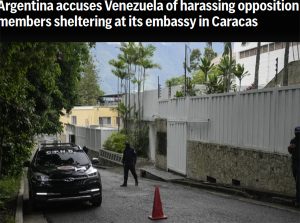Portfolio players redirect cargoes to JKTC

Michell Kim, Platts
SEOUL
EnergiesNet.com 11 03 2022
Despite high LNG shipping rates, a few prompt-delivery cargoes in the Atlantic Basin have been diverted to the Pacific Basin ahead of winter’s peak in Northeast Asia, reflecting high storage levels at European terminals, multiple market sources said.
Many market participants say the trend also indicates a potential resurgence of Asian LNG demand as uncertainties surround the Atlantic due to a delayed winter, European price cap discussions and storage oversupply.
“Some portfolio players, who have shipping length, are redirecting their cargoes [in the Atlantic Basin] to JKTC,” a trader based in Singapore said, adding that sellers might want to capitalize on some of their cargoes afloat in Europe and the US because of a warmer-than-expected winter rather than bear high boil-off gas, or BOG, costs.
Another market source agreed, saying, “[portfolio majors] would prefer to release vessel early for next loading, rather than wait at terminals in the Atlantic Basin.”
A widening East-West spread has also reopened arbitrage economics between the two regions. The second-half December JKM-H1 December Northwest Europe spread against US Gulf Coast to North Asia/Northwest Europe freight hit a three-month high of $15.08/MMBtu Oct. 3 and remained in positive territory until Oct. 31. Platts, part of S&P Global Commodity Insights, last assessed the value at minus $3.17/MMBtu Nov. 2.
Certain companies motivated to finalize profit and loss on their trading books before the year’s end by selling volumes into Asia and closing their current physical positions could be another factor, a second market source said.
Vessels with captain’s destinations head for Asia
A number of vessels in the Atlantic Basin have set a captain’s destination for Asia instead of Europe, according to the Platts cFlow ship and commodity tracking software from S&P Global.
The BW Brussels on the USGC shows a captain’s estimated arrival at Dahej on India’s west coast Dec. 4. Its last port was the Sabine Pass LNG terminal in the US.
LNG vessel Aristarchos in the South American shipping lane has set a destination for Oita in Kyushu, Japan and is estimated to arrive Nov. 19. The vessel was last stationed in Ingleside, Texas.
“Vessels called La seine and Adriano Knutson seem to have been diverted to Asia from original Europe destinations,” a market source based in Singapore said Nov. 3.
Most vessels might continue keeping afloat in Europe as they do not have sufficient shipping length to swing the cargoes to Asia due to high freight costs, the first trader said. However, some sellers with flexible shipping ability might still want to divert their cargoes to Asia to avoid the uncertainty of protracted floating vessels.
“If winter [in Europe] comes late and the ships cannot discharge the cargoes to make it on time for the next loading, who will pay for the BOG?” the trader said.
Another market source based in Europe said a potential price cap in the Atlantic Basin might prompt several sellers to shift EU LNG to Asia.
Qatar Energy minister Saad Al Kaabi has said that the European proposal to cap LNG prices is “hypocritical”, according to media reports. He said, although Qatar has pledged to not divert LNG cargoes from Europe, nothing is permanent. That could be translated into cargoes potentially diverting to Asia from the Atlantic Basin, traders said.
Uncertainties persist in Pacific Basin
Several market participants said it is premature to say that Asia will reclaim the status of a premium LNG market.
Most sellers likely staying afloat in the Atlantic Basin in the wake of high freight rates are waiting for a colder winter to kick in, multiple market sources said.
Tepid LNG demand from major buying countries, including China, Japan, and South Korea, due to high inventory levels and elevated domestic gas supplies in China, were directing the arbitrage flows.
Sluggish LNG import demand in India because of accelerated fuel switching and increased domestic gas supplies might make Atlantic cargo deliveries difficult, several market sources said.
Many cargoes from the Atlantic Basin have been frequently redirected primarily to India instead of JKTC in the past, thanks to cheaper freight rates.
An expected LNG demand boost as more regasification capacity comes online, coupled with a sustained reduction in pipeline natural gas supply, make Europe a stronger market than Asia.
“[Firmer] European [LNG] demand and structurally lower pipeline supplies [are keeping Europe at a premium to JKM],” a Europe-based LNG trader said.
Europe could continue to be a premium market into mid-2024 driven by fundamentals, the trader said.
The Platts LNG Northwest Europe futures contract traded for 300 lots Oct. 31. A February trade was at a $2/MMBtu premium over JKM, the benchmark price, reflecting spot LNG deliveries to Northeast Asia, according to market sources.
spglobal.com 11 03 2022











